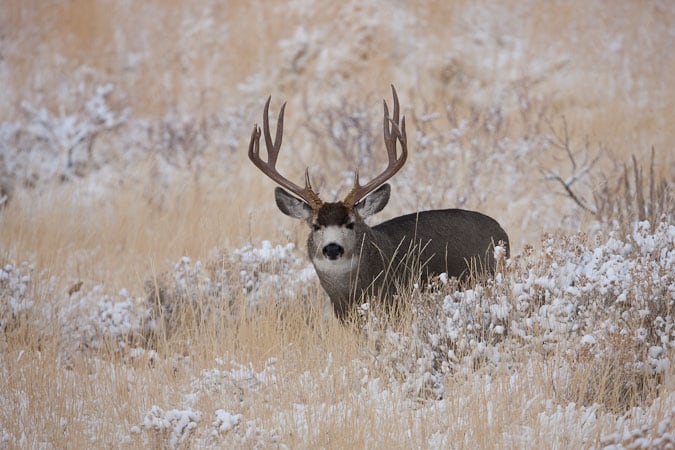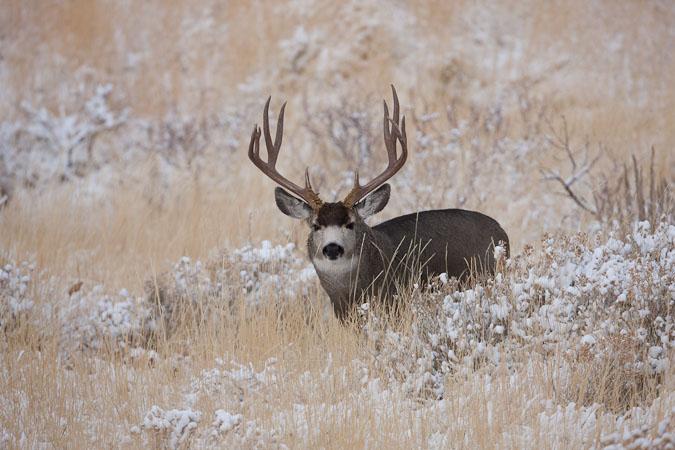- SCIENTIFIC NAME
- Odocoileus hemionus
- CLASSIFICATION
- Mammal
- LIFE SPAN
- 10-12 Years
- SIZE
- 50-85” | 125-330lbs
- STATE CONSERVATION STATUS
-
- Priority Species
- FEDERAL CONSERVATION STATUS
- Least Concern
- GAME STATUS
- Game
- GAME TYPE
- Big Game
- Washoe
- Humboldt
- Pershing
- Churchill
- Mineral
- Lyon
- Douglas
- Carson City
- Storey
- Elko
- Lander
- Eureka
- White Pine
- Esmeralda
- Nye
- Lincoln
- Clark
Habitat & Range
Mule Deer move between different habitat types but seem to prefer arid, open areas and rocky hillsides.
- Cold desert shrubland and sagebrush
- Grasslands
- Upland Forests
Threats
- Drought
- Habitat Degradation
- Habitat Loss
Natural History
Mule Deer are herbivores, relying on plant material to survive. Their diet varies throughout the year and is very seasonal. Mule Deer are sagebrush obligates and they rely on sagebrush during the winter months when there is not a lot of other forage available. Mule Deer bucks (male deer) grow antlers each year that fall off after the “rut,” or mating season. During this time, males will fight for the right to mate with female deer. They lock antlers and will fight until exhaustion. Mule Deer typically have two fawns during the early summer. Fawns are born spotted and scentless. Does (female deer) will leave their young for hours at a time so that they can forage. The fawns’ spotted fur helps in camouflage and the lack of scent help protect them from predators.
Populations of Mule Deer in Nevada have been declining for the last couple of decades. Loss of quality habitat from extreme drought, invasive grasses, wildfires, and overpopulation of wild horses and burros have contributed to this decline. NDOW initiated the Mule Deer Enhancement Program (MDEP) to address these issues and the dropping deer population. MDEP is a collaborative endeavor bringing together non-governmental organizations, land management agencies, private landowners, and industry partners with the goal of putting more Mule Deer on the landscape. Learn more about how NDOW works to conserve mule deer
Learn More:
Sagebrush Habitat Planning_Handout
Migration Corridors of Mule Deer in the Ruby Mountains
Migration Corridors of Mule Deer in the Pequop Mountains
Fun Facts














